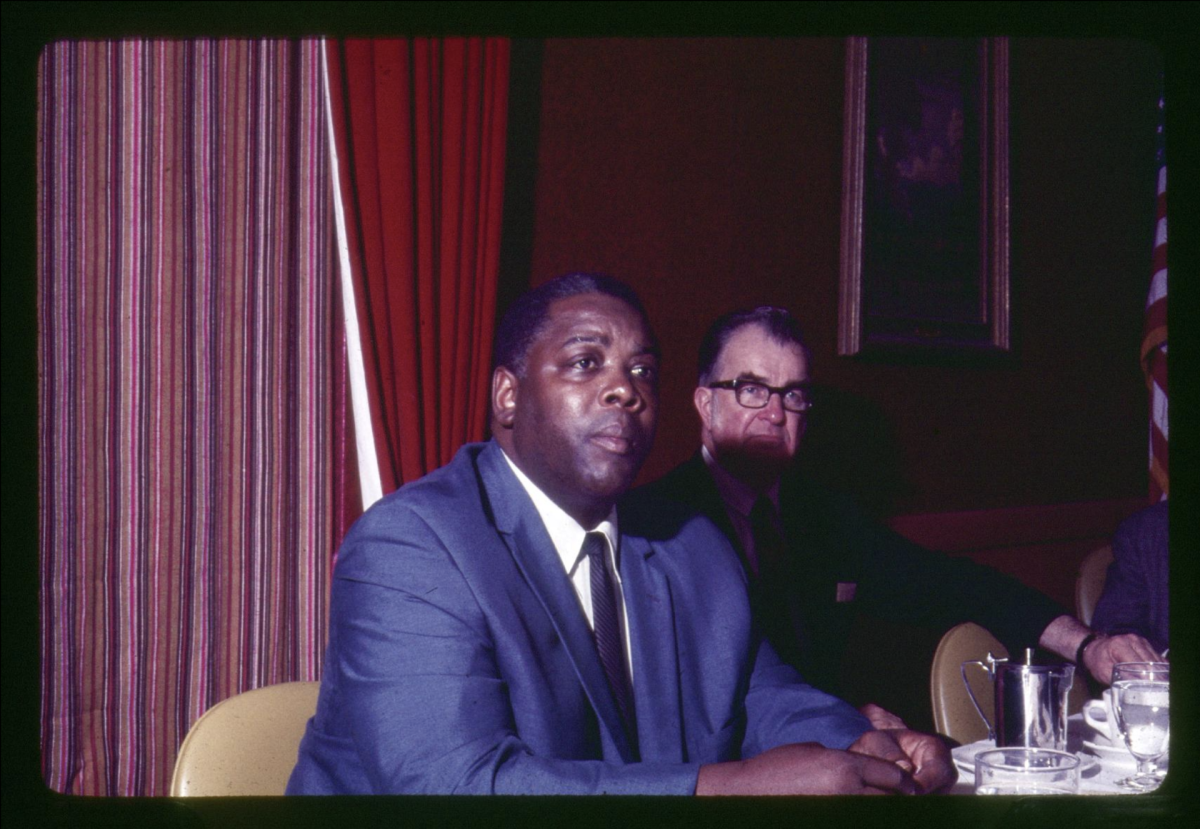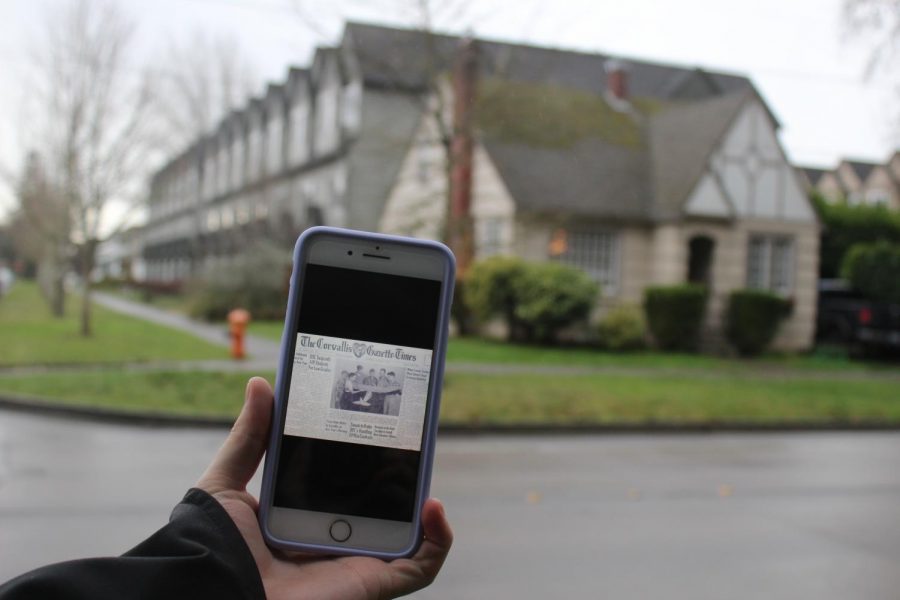Demolishing, rebuilding, adapting: a history of the Corvallis media
March 1, 2021
The Corvallis Gazette-Times is one of the city’s major newspapers, established in December of 1909 when two competing papers, The Corvallis Times and The Corvallis Gazette underwent a merger. Prior to the installment of The Daily Baro, the Gazette-Times was the only newspaper available in Corvallis, Ore.
Theresa Novak was hired as editorial page editor in 2003 at the Gazette-Times, and held multiple responsibilities and job titles until she left in mid- 2015. She recounted one of her first big stories that she worked on during her time at the Gazette-Times, which was the abduction and murder of Brooke Wilberger in 2004.
When Wilberger’s case was labeled a missing person, Novak said that the case had galvanized the city. The city had come together quickly to support the family and their search for their daughter.
“The part that stuck with me wasn’t just the horrible tragedy of an excellent young woman’s life being cut short at 19,” Novak said. “It was that the newspaper at that time still had a real role in bringing people together and keeping them informed.”
Novak stated that it was one of the first big stories that she had been able to work on for the Gazette-Times. Unfortunately, Novak was on the frontlines of witnessing the decline of a newspaper that had a significant impact and role within its community for more than a hundred years.
With cutbacks and layoffs, it meant that the team at the Gazette-Times would have to do more with less resources on hand.
“It was both encouraging to see what people could do, but it was also sad, too,” Novak said. “It was a loss for the community; it was a place where a lot of people had their first job as a newspaper delivery person. It was a community touchstone that was lost.”
It was not only Novak who had witnessed the changes in the Gazette-Times. Former Managing Editor Rob Priewe and current Sports Editor Steve Gress were also among the journalists at the forefront of these significant changes.
Priewe, now the advisor to The Commuter for Linn-Benton Community College, stated that one of the changes he witnessed was that Lee enterprises—the company owning the Gazette-Times —had bought the Albany Democrat-Herald.
“We merged the two newsrooms and we put out a Sunday newspaper,” Priewe said. “For people who lived in Linn County, the Democrat-Herald had never had a Sunday newspaper before then. So that was a real marketing challenge to try to involve the Albany newsroom and create this Sunday newspaper.”
The Sunday newspaper still exists today, but Priewe stated that it was much different compared to what they had initially imagined it to look like. Additionally, one company putting out two different newspapers for different com- munities came with a set of challenges that would have to be tackled.
Although the transition online for these newspapers proved no great challenge, given that the staff had already been working on improving their online presence, the COVID-19 pandemic had still greatly affected how local news teams began operating.
For The Commuter, Priewe stated that everything has been remotely operated since last summer in accordance with state and local guidelines. LBCC has given online access to valuable resources such as Adobe Suite for students, allowing them to continue work from the safety of their homes.
“It’s been amazing,” Priewe said. “[But] on the one hand, it’s a challenge because you don’t have that synergy that happens when you’re working face-to-face.”
For Gress at the Gazette-Times, the divide between the sports and news sections has significantly become less clear.
“It used to always be that ‘this is the sports staff, and they do sports stuff,’” Gress said. “The difference is that every person pitched in and did whatever it was that was needed. Obviously, we had no sports to cover, so everybody has picked up some news stories.”
But one of the physical and largest changes to the Gazette-Times had been the demolition of the original building for the newspaper’s operations in 2016. The original building had been on 600 SW Jefferson Ave., where a student apartment complex now stands.
In 2014 after Lee Enterprises sold the building that the Gazette-Times was located, staffers were told to pack, move and downsize. According to Novak, they had to because between 1971-2014, the building held the offices, newsrooms, advertising and circulation departments taking up almost a city block and the new location was smaller than a high school gym.
After selling the building in 2014, the Gazette-Times staff worked from a building located three blocks from the Timberhill shopping center before moving into the Albany newsroom.
“Old photos, books, furniture and equipment were removed, donated or tossed,” Novak said via email. “The most important historic items—the bound volumes of newspapers that chronicled Corvallis’ daily events for more than 100 years—found a new home with the Benton County Historical Society. However, some memorable things—including the foot-high brass letters that had been bolted to the front of its building for decades—were packed into various cardboard boxes, for an uncertain future.”
Following the absence of Corvallis media coverage typically put out by the Gazette-Times, The Daily Barometer created the city section in late 2019 with hopes to provide both off-campus students with information on the city’s news events, as well as Corvallis residents who previously subscribed to the physical papers that no longer printed.



















































































![Newspaper clipping from February 25, 1970 in the Daily Barometer showing an article written by Bob Allen, past Barometer Editor. This article was written to spotlight both the student body’s lack of participation with student government at the time in conjunction with their class representatives response. [It’s important to note ASOSU was not structured identically to today’s standards, likely having a president on behalf of each class work together as one entity as opposed to one president representing all classes.]](https://dailybaro.orangemedianetwork.com/wp-content/uploads/2025/03/Screenshot-2025-03-12-1.00.42-PM-e1741811160853.png)























